President Nelsen testifies about COVID-19 impacts on Sac State to California State Assembly
Layoffs across CSU system and ‘digital divide’ discussed
Sacramento State President Robert Nelsen gives his testimony about COVID-19’s impacts on the university to the California State Assembly Higher Education and Budget Committees. Nelsen discussed Sac State’s graduation and enrollment rates as well as the ‘digital divide’ affecting students during this virtual semester. Screenshot taken via Zoom by Piper Haitsuka.
November 12, 2020
Sacramento State President Robert Nelsen testified about the impacts of the COVID-19 pandemic on Sac State at a joint hearing in front of the California State Assembly’s Higher Education and Budget Committees Thursday via livestream.
Nelsen said the university is working to ensure that every student has the resources to learn virtually through the pandemic.
To prepare for the fall semester being virtual, Nelsen said Sac State spent $1 million for approximately 800 faculty to attend a summer teaching program that worked on improving their Canvas and Zoom skills, using funding given to the university from the Coronavirus Aid, Relief, and Economic Security (CARES) Act.
The training encouraged faculty to “emphasize empathy” for students learning online and stressed the importance of constant communication, Nelsen said.
Nelsen also said Sac State is trying to “bridge the digital divide” by investing in technology and other services that assist students with their online learning. So far, Sac State has spent $2 million on technology to loan to students, including 1,295 laptops, 1,194 hotspots paid for monthly and 323 webcams, according to Nelsen.
RELATED: KYLIEBYTES: What can we do about the digital divide?
“While the pandemic has changed how we teach and how we operate, I firmly believe that it cannot distract us from the world that is surrounding us,” Nelsen said.
During the spring 2020 semester, only 70 of the 31,100 students enrolled at Sac State withdrew and all 9,800 students who applied for graduation ended the term eligible to graduate, which Nelsen said is a record number.
In addition, Nelsen said the four-year graduation rate for this year is 21.7%, an increase from 8.5% in 2015, and the graduation rates for African American students and first-generation students have tripled since 2016.
“The rise in the graduation rates at just Sac State has collectively saved our students and their families $57 million,” Nelsen said.
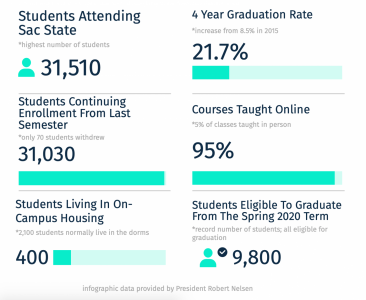
Nelsen said that Sac State is a “university on the rise,” despite a $30 million revenue loss, $10.7 million cut in budget and a $4.7 million investment in COVID-related expenses.
“We have used $7 million of our campus reserves to this point. That leaves us with only one month of reserves that we can call on,” Nelsen said.
Assemblymember Kevin McCarty told Nelsen he was doing a tremendous job with saving students from accumulating excess debt, and recommended other colleges try to replicate the system he has been implementing.
Ryan Storm, California State University’s assistant vice chancellor for the budget, spoke on behalf of the CSU and the impacts of COVID-19 on student success, faculty resources and finances.
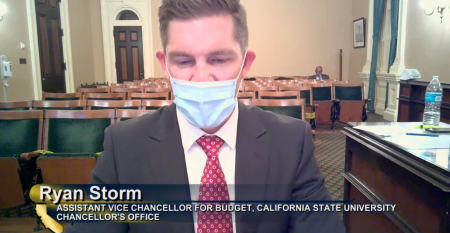
Storm said the CSU system is prioritizing meeting students’ basic needs, such as implementing emergency services for students with no safe place to go. Across the 23 CSU campuses, the CSU is also working on training faculty on how to smoothly transition their in-person classes to a completely digital format.
The issue of layoffs of faculty and staff in the CSU system was something that could not be avoided, Storm said. After an approximate $1 billion in negative economic impact among the CSU campuses, the CSU system had to draw on 45% of the non-emergency reserves and cut costs wherever possible, Storm said.
When it comes to non-core areas of work such as campus bookstores or food services, Storm reported the CSU let hundreds of employees go and that primarily student workers were let go due to a lack of work or funds.
Of the 344 layoff notices sent to employees, 90 were rescinded to provide the staff with part-time work, Storm said. The only paid leave available is for faculty age 65 and up, those with pre-existing conditions or those who are sick or caring for a sick family member.
Despite COVID-19’s negative effects on universities, the CSU enrolled its largest ever student body of 486,000 students, Storm said.
“It has been an unprecedented challenge of nine months, but I have never been prouder and more impressed by how our faculty and staff and students have reacted,” Nelsen said. “They are my heroes.”


























































































































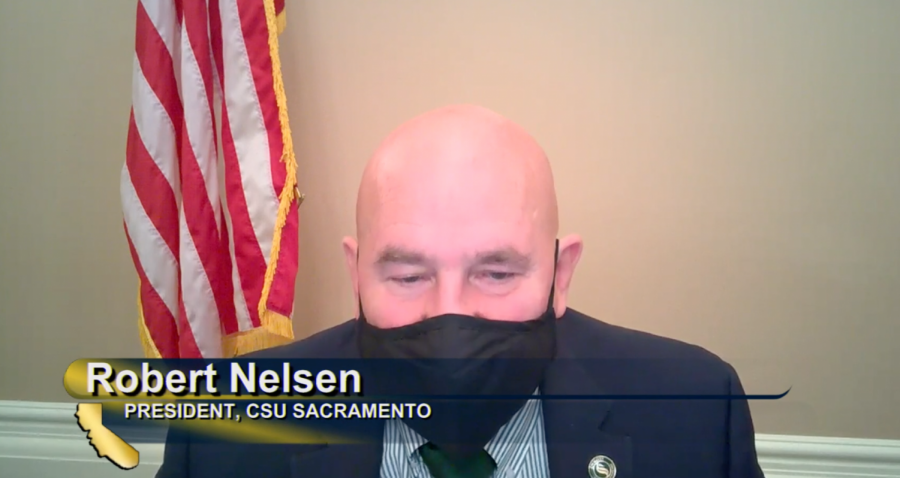

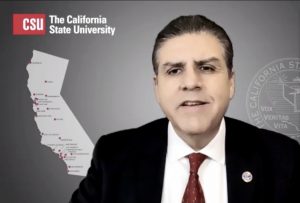
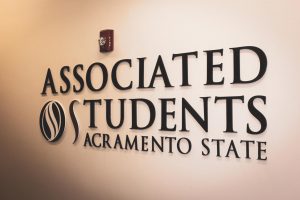






Masks R Us • Nov 13, 2020 at 5:31 am
Look at that, President Nelsen sensed a photo-op so he put on his mask. Such a phony.